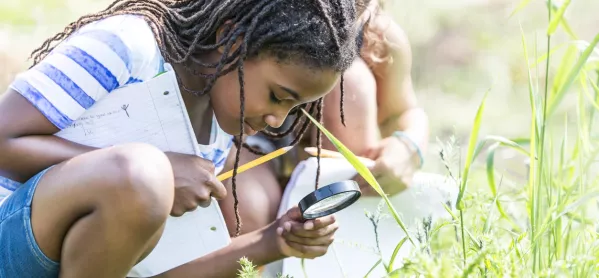We need more space to learn

 To be a successful leader, you need a bit of imagination. The role is such a varied one - requiring bespoke solutions to unique problems - that attempting to box all decisions into a preordained and tightly controlled process nearly always ends up with poor results that do not fit the scenario and fail to consider long-term impacts.
To be a successful leader, you need a bit of imagination. The role is such a varied one - requiring bespoke solutions to unique problems - that attempting to box all decisions into a preordained and tightly controlled process nearly always ends up with poor results that do not fit the scenario and fail to consider long-term impacts.
This is particularly true when it comes to expanding school buildings, an issue that will be currently on the minds of most school leaders. Today, schools all around the world are experiencing the pressures of higher enrolment targets and, as a result, the need to accommodate more classes per year group. In the UK in particular, the strain is being felt by the primary school sector as the rise in the number of children needing a school place is outstripping the number of places available.
Faced with this issue, many school leaders are resorting to the established method of solving the problem. The leaders with a pot of cash build new classrooms and those with an empty wallet - the vast majority - turn to “temporary” classrooms.
On the face of it and in the short term, there is not much wrong with this approach. But as time passes, problems arise. Once the new classrooms are constructed, the children’s outdoor space starts to look a lot smaller. What is left is suddenly cast into shadow, and activities near those buildings are restricted to protect shiny new windows from errant footballs. In essence, the outside space that is so crucial for children’s development is eroded into ever smaller areas. This is detrimental to the health and well-being of the students - and does not help with their attention levels, either.
But with a little imagination, a school leader could use outdoor spaces and community buildings to devise a productive and inexpensive solution that enhances students’ opportunities for outdoor play and new experiences.
To take outside spaces first: inside the school gates you can create non- building-based sheltered learning environments that are flexible, diverse, interesting and natural; you could even involve the children in their planning and design. Some examples of how to do this include the use of shade sails, gazebos or more permanent structures such as geodesic domes.
Varying weather conditions can be accommodated through well-planned shelters, weather appropriate clothing, the use of transition areas at the building entrance to help manage wet and muddy clothing, and sensibly designed activities that make the most of the opportunities that the climate can offer.
Outdoor learning can be beneficial for students who find traditional classroom learning less accessible. Indeed, it can create richer experiential learning opportunities for everyone.
Opportunities lie beyond the school gates, too. A simple mapping exercise will identify underused spaces that could form part of a community campus approach to learning. Libraries, museums and community centres could all be considered as venues for the delivery of teaching and learning.
These spaces need to be within walking distance but it is not appropriate to timetable them into single lesson periods because of how long it takes to move to and from them - you do not want to eat in to teaching time. Clearly, too, not all these external spaces will be free.
While these options will never entirely mitigate the need for additional buildings - and will create their own challenges - the alternative is to continue to put more children into schools that are reducing their outdoor space. The impact of this on behaviour, motivation and attainment will be significant and should be avoided. School leaders need to think creatively and avoid the easy option.
Juno Hollyhock is executive director of Learning Through Landscapes, www.ltl.org.ukIn short
Keep reading for just £1 per month
You've reached your limit of free articles this month. Subscribe for £1 per month for three months and get:
- Unlimited access to all Tes magazine content
- Exclusive subscriber-only stories
- Award-winning email newsletters